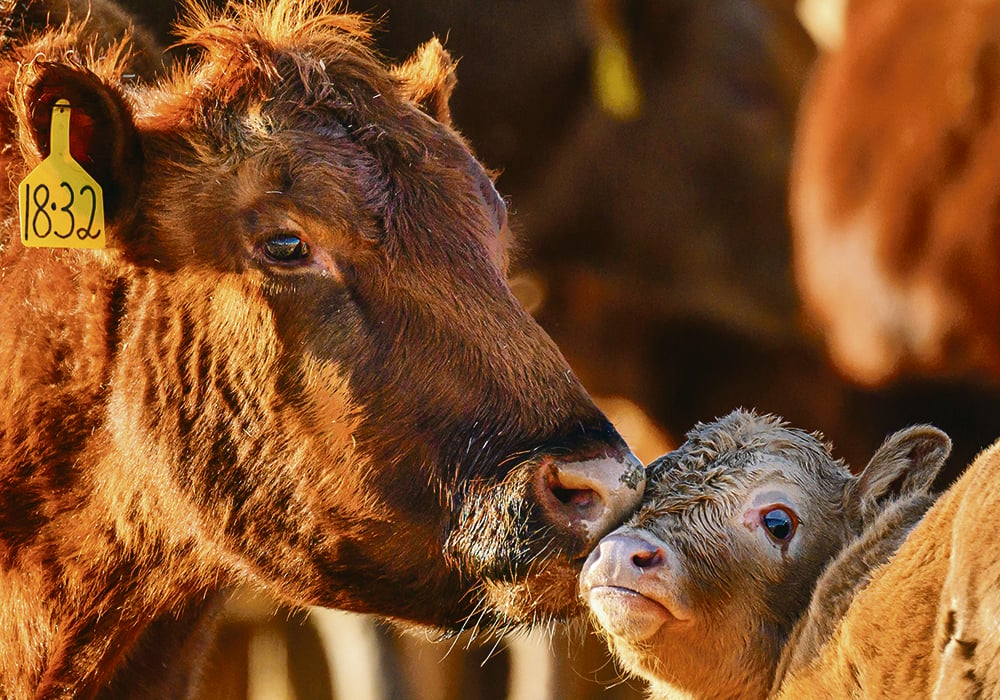Feed has been short in a lot of places over the last two years.
Producers who have doubts about their feed’s nutrition or availability should work with nutritionists to explore feed alternatives and feed sources and supplements.
Sometimes we get lucky with a mild winter like this one, which allows us to save on feed and bedding, so maybe next year producers can start stockpiling feed again.
In any herd, there can be a great variation in body condition scores because some cattle are easy keepers and some are higher maintenance, but we feed to the average, which is a score of 2.5 to 3.5 on a five-point scale.
Read Also

Lending policy still focused on primary producers: Farm Credit Canada
Farm Credit Canada said it has not changed its business practices and remains committed to supporting all producers, after a report from an Ottawa-based media outlet claimed otherwise.
At calving, we prefer to keep that at three or up. Also, we want that three score before calving so the colostrum produced is optimal and strength for uterine contractions are there.
At calving, the cow’s immune system is suppressed so we want as much energy focused on immune function rather than trying to gain weight. Colostrum must be produced and then milk produced and it makes sense that both are reduced significantly if the cow lacks nutrients with a low body condition score.
Low body condition scores can make them prone to co-morbidities or secondary diseases, such as external and internal parasites or pneumonia, even in cows.
In cold weather with less body fat and insulation, their feed efficiency goes out the window because it is taking more energy to keep warm.
With low body condition, this has generally occurred over time and calves are born leaner with less fat reserves and are less able to tolerate the cold. They will be more prone to the three main communicable diseases of calves: scours, pneumonia and navel infection.
In cattle, there is the five-point scoring system with five being over fat and one being a skeleton. There are variations in every herd but ideally we want the animals in the herd to score between 2.5 and 3.5 with the vast majority of those three to 3.5. This is setting you up for success because after calving, the cows must maintain body condition and even have it increase a bit so calves will recycle and breed and conceive. Thin cows can become a two-year ordeal with calving problems because they may not push effectively, leading to an increase in stillbirths and an increase in retained placentas. This will especially happen if macro and microminerals are shorted.
If cattle get low in body condition, they are naturally hungry and this is where behaviours such as eating bedding can lead to impactions from the straight fibre they consume.
Also, if a thin cow goes down from weakness, they are not getting up again because we cannot provide the energy quick enough to reverse the weight loss. This is generally when animals get to body condition scores of 1.5 or less or when the spine is very visible.
It may be difficult to notice gradual weight loss if you are the person feeding the animals each day. Sometimes, it is wise to have a different set of eyes on them once in a while to help you assess.
Second calvers, really old cows and ones potentially carrying twins will be thinner than the rest of the herd, so they should be fed separately to provide them with more energy to elevate their condition score.
Other cows may be thin from conditions such as hardware, lumpy jaw, lameness and kidney infections, so they need to be looked after as well. Often, weight loss may be the first things seen in these more chronic conditions. A lot of these conditions flare up around calving season. Energy is drawn from the developing fetus and it is taking up room in the abdomen as it reaches term, so kidneys get taxed filtering the blood and internal infections flare up.
If many cows are underweight, it is a feed problem with either the quality or quantity. If only a few cows are underweight, then the cause is likely individual.
I have seen herds where you can easily pick out the cows carrying twins by their condition. The rest of the herd will be perfect for body condition scores, yet a few cows of varying ages are considerably thinner.
It is important we strive to keep most cattle in what has been proven to be the ideal body condition of 2.5 to 3.5. There are lots of great reference sources out there, including videos on taking a body condition score but your veterinarian and nutritionists can assist if required.
It amazes me when I see a thin cow that can deliver, nurse, has no retained placenta and rebreed on time. It is when this limit is pushed that sickness can appear in the cow or calf, or reproductive wrecks can happen.
Here is to healthy calves and a great calving season everyone.
Roy Lewis works as a veterinarian in Alberta.















